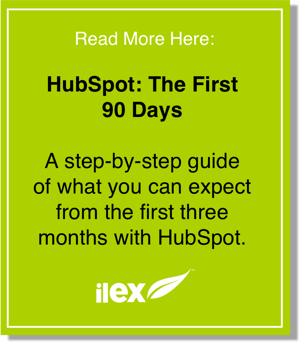One of the biggest questions we get asked by our B2B tech and telecom clients is how to downscale and maximise their trade show attendance. For a lot of B2B companies, trade shows form a large proportion of their marketing strategy and budget, with some attending different shows across the globe on a monthly basis.
While trade shows can be a useful way to meet new prospects and get your name out in the market, they can also be extremely costly and difficult to measure. With an increasing number of industry-specific trade shows happening each year, more companies are beginning to realise that they don’t have the time and resources to attend them all. The challenge for B2B companies is to find an alternative, measurable and cost-efficient strategy that can achieve better results, while maximising the value of the trade shows they do attend.
Here’s four key business outcomes that many companies associate with trade shows, and the alternative methods that can help you achieve them
1. Visibility & Awareness
Going to every single trade show isn’t the only way to gain visibility and awareness, and also not the most effective way to do so. We recommend only attending the top four trade shows in your industry, then investing your time and resources into a marketing strategy dedicated to visibility.
You can fill in the gaps between conferences with social media content, press releases and blog posts. By publishing content across different channels, you can create multiple touchpoints and increase your online presence, which in turn increases visibility and awareness. For a similar cost of paying to go to multiple trade shows in a month, you can have three to four months’ worth of dynamic content that has a lasting footprint.
2. Finding New Prospects
An effective way of finding new prospects outside of trade shows is through an inbound marketing strategy. This strategy involves creating helpful content that directly addresses your customers’ pain points. Pushing out business cards can be hit and miss. The person you meet might not be a decision maker or need your services at all. By using an inbound marketing strategy, you can help to solve pain points for people who are relevant and looking for help.
It’s important to think about common challenges faced by customers in your sector, and how these can be solved. If you can create content such as blog posts that offer helpful advice surrounding these challenges, you’re more likely to find new prospects that will have a higher level of trust for your company.
You can then measure the results, see what works and refine your approach to develop even better content into the future. Trade shows are usually based on anecdotal evidence instead of hard numbers, making it difficult to measure ROI for a single show. However, inbound marketing enables marketing teams to track leads from the first engagement right through to a sale, and in turn directly tie a sale to a piece of content.
3. Nurturing Leads

Finding new prospects is great for awareness, but nurturing these leads is a crucial step for conversion to sales. This doesn’t have to be done through physical meetings at trade shows. Wining and dining a prospect whenever you’re in the same city isn’t as efficient or scalable as consistently sharing helpful insights and advice. You can be at the top of prospects’ minds and shape relationships through long-term nurturing.
Utilising a marketing automation platform such as HubSpot is an effective way to communicate with your leads. Workflows can be set up that send automatic follow-up emails to prospects that have, for example, downloaded a free eBook from your website. This is an effective way to nurture and convert more leads into customers, by demonstrating an understanding of their goals and offering useful advice relevant to their pain points.
4. Building Momentum
By attending fewer trade shows per year, you can allocate more budget to more effective methods of building momentum. This includes PR in the form of press releases, bylines and thought leadership articles.
Sponsorship for a trade show simply says that you’re in the game, whereas PR can be used to drive momentum and show that your business is evolving and successful. Having your logo on a billboard isn’t as meaningful to prospects as demonstrating exactly how you’re helping other businesses or solving challenges. Sponsorship doesn’t tell a story and create engagement, it is simply a tool for driving name recognition.
By regularly distributing interesting pieces of content across global publications, you can increase awareness, visibility and momentum and reach a significantly larger audience than trade shows alone. This will build brand personality while showing that your business is going places and worthy of investing time in.
Combining these different methods provides a much more effective and cost-efficient strategy compared to trade shows alone, which often come with a large price tag and short-lived results. By using an inbound strategy, you can leave a lasting footprint with multiple touch points for more lead generation and opportunities into the future. As well as this, you can measure your ROI through marketing analytics, which provide considerably more useful insights than the number of business cards collected at a trade show.
When it comes to trade shows, quality is key. It’s important to narrow down the most important shows to attend, and then develop an effective marketing strategy for consistent results between these events.
If you would like to learn about how we can help you create an effective inbound marketing strategy, book a consultation today:



